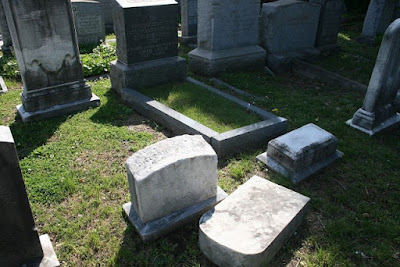Recalling the Heyday Of Trenton's Cigar Industry
Cigar Makers Henry Clay and Bock Co.
Recalling the Heyday Of Trenton's Cigar Industry
By MARGO NASHSEPT. 14, 2003
FOR the first half of the 20th century, cigar
manufacturing was an important industry in this city, right up there with ceramics
and Roebling wire. Among the cigar factories in town was the Henry Clay and
Bock Company, which made La Corona and other cigars out of Cuban tobacco.
Winston Churchill was a loyal customer.
At the company's factory here, the employees who
rolled the cigars were entertained by singers. When the singers got sick,
production went down, according to contemporary newspaper accounts.
The story of Trenton's cigar workers, especially
those at Henry Clay, is the subject of an exhibition at the Trenton City Museum.
The show, ''Churchills in Chambersburg: Trenton Cigar Making,'' takes its title
from the section of town where Henry Clay had its factory from 1933 to 1967, as
well as from the cigars named for the company's famous customer.
The exhibition is presented in collaboration with
the McCarter Theater Center, whose new play ''Anna in the Tropics,'' is set in
a cigar factory in Florida, where workers were entertained by a ''lector'' who
read aloud to them.
''The cigar industry was critical to keeping this town
alive and moving during the Depression,'' said Brian Hill, director of the
museum, who was a co-curator of the show with Stephanie Morgano, vice-president
of the museum's board. They interviewed many former factory workers and the
children of those workers.
''One of the big things I personally discovered,
was that a cigar isn't just a thing you smoke,'' Ms. Morgano said. ''It's
actually created by an artisan and takes a lot of skill and labor and love.''
Among Trenton cigar companies were Coon Skin
Cigars, in business in the 1890's, and Seidenburg and Company, which become the
American Cigar Company, and closed in the 1940's. At its height, the industry
employed about 2,000 workers here. Most were women who emigrated from Hungary,
Poland and Italy.
The show includes film footage and photographs as
well as cigars, cigar boxes, cigar bands, gauges, humidors, a porcelain
spittoon and other tobacco arcana. One photograph, published in The Trenton
Times in August 1909, shows a singer, Helen Sabo, entertaining the workers. The
accompanying article noted that she sang in the languages of the workers'
native countries.
Henry Clay, which was a subsidiary of the American
Tobacco Company, had a factory in Cuba at one time. But in 1933, after a strike
by Cuban workers, the company moved the factory to Trenton, importing tobacco
from Cuba.
The new factory cost $500,000 to build and
resembled a tropical hotel. It was made of stucco, had nine-foot high windows,
and an interior patio with a fountain and a pond. There was a showroom with a
topographical map of Cuba on a long table.
For a time, workers wore uniforms, with bonnets and
aprons. There were Christmas parties, basketball games and, above all, a salary
during the Depression, even though that salary was only 10 cents an hour.
By the 1960's, cigar making was becoming
mechanized, and operations were moved to Pennsylvania. Today, cigars with the
brand names La Corona and Henry Clay are among those produced in the Dominican
Republic by Altadis U.S.A. In the 1980's, the company's factory in Trenton
became Grand Court Villas, an apartment building.
Memories of the plant and the work it provided
remain vivid in and around Trenton and among those who retired elsewhere. Many
with those memories were at the opening of the exhibit on Sept. 5.
Among former workers who turned up were Mary Buck,
67, of Ewing, whose job was to select tobacco leaves for wrapper or filler, and
Millie Dargenio Sirolli, 87, a former cigar roller who lives in Yardley, Pa..
Irene Koehler, also of Yardley, whose parents met
when they worked at the factory, was also there. She said her father was proud
of his job, which enabled her parents to build their first house. Her father
saved many cigars, labels and articles about the plant, and Ms. Koehler lent
them to the museum for the show.
Blanche Levine Segal, 77, was at the opening with
her husband, Al, 78. They live in Pennington now. Mrs. Segal said that when she
was growing up in Trenton, she and her friends would go by the factory to get
cigar bands and make necklaces out of them.
Anna Dabronzo, 91, of Dania Beach, Fla., was a
packer at Henry Clay. She said she and other women workers sometimes slipped
their names into the cigar boxes they packed. ''I got a letter back from a guy
from Lynbrook, N.Y.,'' she recalled.
She added that at Christmas she packed cedar boxes
to send to England; the cigars were damp and wrapped in delicate tissue paper.
''They only went to the big, big people in London,'' Ms. Dabronzo said, among
them, Churchill.
''Churchills in Chambersburg: Trenton Cigar
Making'' is at the Trenton City Museum, Ellarslie Mansion in Cadwalader Park,
through Oct. 26. Information: (609)989-3632.
https://www.nytimes.com/2003/09/14/nyregion/recalling-the-heyday-of-trenton-s-cigar-industry.html

Comments
Post a Comment